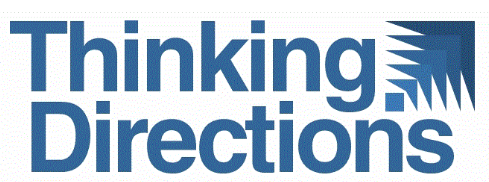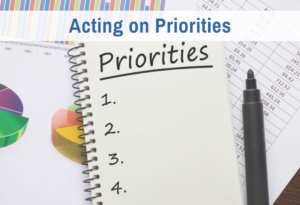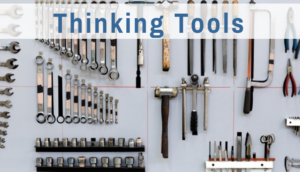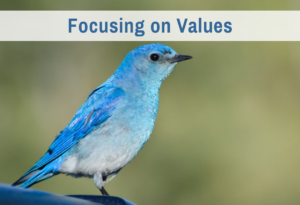In the last few articles, I’ve argued that a central purpose integrates your life, that it fits into a real life, that it needs to be a long-range productive goal, not something else, and how to identify your central purpose. I’ve asserted that it is important to a happy life. But how is that?
Sometimes it can seem that happiness and productive work are opposed to one another. Some people who work very hard wind up feeling like they are running on a hamster wheel. They are putting in the effort, but they don’t get any short-term payoff. The goal and the happiness it is supposed to bring are far out in the future. In the meantime, they sacrifice their health and their relationships and are miserable.
The cause of such unhappiness in these cases is not in setting a long-range productive goal, but in not fully appreciating the fundamental difference between themselves and a hamster.
Hamsters love running on a wheel. Running releases endorphins for them. But this is all there is to the life of a hamster. In the “Objectivist Ethics,” Ayn Rand writes:
An animal’s life consists of a series of separate cycles, repeated over and over again, such as the cycle of breeding its young, or of storing food for the winter; an animal’s consciousness cannot integrate its entire lifespan; it can carry just so far, then the animal has to begin the cycle all over again, with no connection to the past. Man’s life is a continuous whole: for good or evil, every day, year and decade of his life holds the sum of all the days behind him.
This is why we need, not just momentary pleasures, but a durable, long-term happiness. She explains in the same article:
Man must choose his actions, values and goals by the standard of that which is proper to man—in order to achieve, maintain, fulfill and enjoy that ultimate value, that end in itself, which is his own life.
For a hamster, the happy life is guaranteed by the right environment. Food. Water. Mild temperature. Another hamster. A wheel to run on. His instincts can take over. Run! Eat! Play! Sleep! Whoohoo!
We who create our own world by choice need also to create our own happiness. It is more involved than just following a simple rule such as “be productive.” If it were simple, everyone would do what is needed to be happy.
Happiness for people rather than hamsters
For people, happiness needs to be baked into your approach to life so that you get both everyday pleasure and long-term joy. This is not so easy to figure out, which is why we have moral principles.
For example, the principle of honesty tells you that if you try faking reality, reality will catch up with you sooner or later. Reality is real; the world of pretend doesn’t exist and won’t pay the bills. Both you and the people around you will notice this eventually.
Similarly, the principle of integrity tells you that if you pay lip service to what you know is right but never act on it, you’re going to get in trouble. Bad actions have bad consequences. You can see this work out in the principle of justice. If you treat good people badly and bad people well, you will push all of the good people away and be surrounded only by the bad actors.
Ayn Rand explains:
[N]either life nor happiness can be achieved by the pursuit of irrational whims. Just as man is free to attempt to survive in any random manner, but will perish unless he lives as his nature requires, so he is free to seek his happiness in any mindless fraud, but the torture of frustration is all he will find, unless he seeks the happiness proper to man. The purpose of morality is to teach you, not to suffer and die, but to enjoy yourself and live. (Galt’s Speech)
You may not agree with her that happiness is the purpose of morality. Not all systems of morality have that as their end. But I hope you do see that happiness requires a systematic approach that ensures both short-range pleasure and long-range joy. This is much wider than moral principles.
Consider such cultural norms as taking one day of seven to rest. You do not need to see that as a religious imperative to believe that this is necessary for physical well-being, or that health is a fundamental source of everyday well-being that contributes importantly to happiness.
Or consider the advice to find a diet consisting of food you are satisfied to eat for the rest of your life plus an exercise program that you enjoy. This is the way to long-term health.
Or if you want deep relationships that foster a happy life, you invest in connection every day. You deal with the conflicts and annoyances in such a way that you still experience love for the other person. If you don’t do this, the relationship fades or spoils. If you do, you have another great source of joy in your life.
The way I would put it is this: If you seek happiness, you need to build satisfaction, confidence, pride, and joy into your method of living life. How you integrate the short- and long- term pleasure varies depending on the domain of values. It needs special attention in the case of long-term productive work.
How you stay happy working on a long-term goal
Very simply, you will not stay happy working on a long-term goal unless you see some kind of meaningful progress on a daily or weekly basis. This is also a practical necessity. Long-term goals require interim meaningful results for you to tell whether or not you are making progress.
This became clear in the early days of software. The following sequence was repeated countless times in countless companies: A team of programmers would set out to write a new program to perform a certain function. The team would come up with an overall design and estimate the time for each module. Then programmers would write each module. Once all of the modules were written, everyone on the team thought they were almost done.
They had barely started. At this point, they would try to get all of the modules to talk with one another. That’s when they would discover fundamental design flaws, missing modules, and overlooked compatibility problems. They would spend 2-3 times as much time getting the software to work together as they’d spent writing the modules. And that’s if they were lucky. Many such a project was abandoned as fatally flawed.
Although they had checked off boxes on task lists and accomplished early milestones, their progress was illusory because they had not connected their short-term goals directly with the values they were trying to achieve.
The software industry has evolved since then. Now the industry uses a Lean or Agile approach, which I like to think of as planned evolution. First they make a quick and dirty version of the program that works. It’s a stripped-down version or an alpha release. Then they add features and fix bugs until they have the fully functional version. Thanks to the prototype, they see meaningful results early in the process and can tell when or if they’re making progress.
In my first career, I was a system engineer, so I learned the importance of this process firsthand. You don’t know if you’ve succeeded until you have some completion that gains the real value you’re after. Finishing some artificial task doesn’t matter. You need real results that you can look at and judge. Until you get them, you have no idea how you’re doing.
If you have a long-range productive goal, you need to ensure you’re making meaningful progress sooner rather than later even to know whether you should keep going or change direction. Psychologically it plays an even bigger role.
The psychological benefits of meaningful results
Psychologically, meaningful progress is necessary to keep working on a long-range goal. You cannot act without motivation. If you are to achieve a long-range goal, you must pursue it in such a way that the work motivates future action. You need to set up a virtuous cycle of success so that the payoff from your initial effort motivates you to put in the next unit of effort.
This is what meaningful progress provides. There is a satisfaction in getting something done. There is pride in seeing it done well. And there is a thrill when it exceeds your expectations. These are the feelings that add up across your life to a background feeling of happiness.
This is why when I teach goal setting or coach people in setting goals, I make sure they have figured out how to see meaningful progress on a daily or weekly basis. When you see objective results early and often, you reap the emotional rewards of success. And you never work for a month or a year or even ten years and then discover that you were totally off track, and that the work was wasted. There is not much worse feeling than that.
Organizing your work so that you see daily or weekly progress is an art. In fact, artists first developed the method. A painter first makes sketches, then paints the canvas in layers that start gross and get more detailed. At any given time, you can see the painting emerging as a whole. Unfinished paintings still have significant emotional impact. They are still meaningful.
These early versions of the finished product are critical for figuring out if it is going in the wrong direction. You will make mistakes in your design. You need to see how the ideas play out in some holistic way so that you can judge the whole. When you are being creative, you are imagining a result — you need to see that result coming into being, and you need objective feedback from interim versions in order to know how you’re doing. That way you can make course corrections to ensure you actually create the vision you have. That is what makes possible the deepest emotional rewards from creative work.
I claim that any large project can be reconceived as a series of key results and short-term tasks that are meaningful. It’s a learnable skill (planned evolution), which I teach in my Thinking Lab. I teach it because I believe it is needed practically to ensure you succeed in the long run, in nearly every area of your life. But it is particularly important in productive work.
Why nothing else will do
This is why it is a mistake to pursue a goal such that you see no progress for weeks or months or years, but at some distant future you believe you will finally have some result. This is a dream, not a goal. It leads to a life of self-deprivation in which happiness is delayed until some mythical day in the future when you have magically achieved the goal.
In truth, such goals rarely are achieved. The only way to achieve them is through sheer brute-force willpower. That necessarily leads to fits and starts and burnout. Most people will not keep getting back up and persevering without some payoff.
Worse, if you set goals that way and put in all that brute-force effort, you’ll find that when you achieve them, they don’t have the lasting satisfaction you’d expect. There is a quick moment of exaltation, and then you are on to the next goal.
This is often what happens when people set a money goal or a status goal. They say, “I’ll be happy when I make $150k/year” or “I’ll be happy when I win x award.” They feel some pleasure when they reach that milestone. Briefly. Then that becomes the new normal, and they think, “What have you done lately?”
The error here is not in setting the goal but in how the goal is pursued. The work itself needs to be meaningful! That always comes from seeing some real value being gained, day in, day out, from the effort. When people work this way, they never end up feeling like they are on a hamster wheel. Instead of living lives that are unhappy with moments of joy, they live happy lives with moments of sadness.
Figuring out how to be happy is a creative undertaking. It requires integrating the short- and the long-term. A central purpose contributes to this journey, by creating meaning in everyday work and showing yourself that you can do what you set out to do over the long haul. A central purpose, properly identified and pursued, is what keeps you off the hamster wheel.









You can see this process in action with Charles Hoskinson’s YouTube videos! Hoskinson, CEO of IOG (Input Output Global–formerly IOHK) and founder of Cardano (a level 3 Blockchain), is constantly reminding developers in the Blockchain eco-system what their long range goals are, what has been accomplished so far, and not to be deterred by short range investors who demand early software releases so the price will go up (despite the consequences of insecurities). See his 2014 Ted Talk, his 2017 Cardano Whiteboard Overview (IOHK youTube Channel), and his most recent Whiteboard (DApps and development). This is a man with a central purpose! Watching him outline ideas is VERY motivating.
Thank you very much for this series!
You’re welcome, Trevor.
I think all really great achievers have worked out this connection between goals and happiness–but most of them can’t explain it in full. They serve as models, not always as teachers.